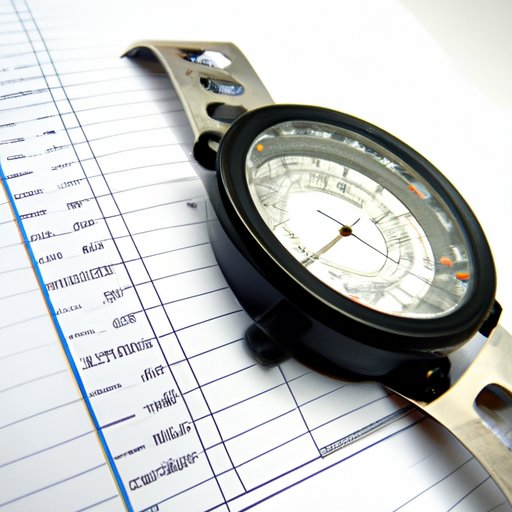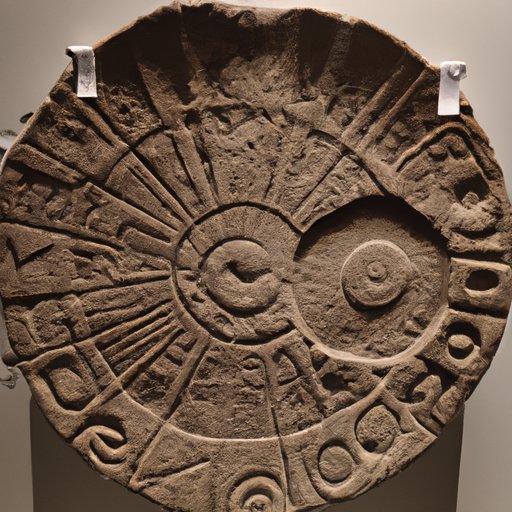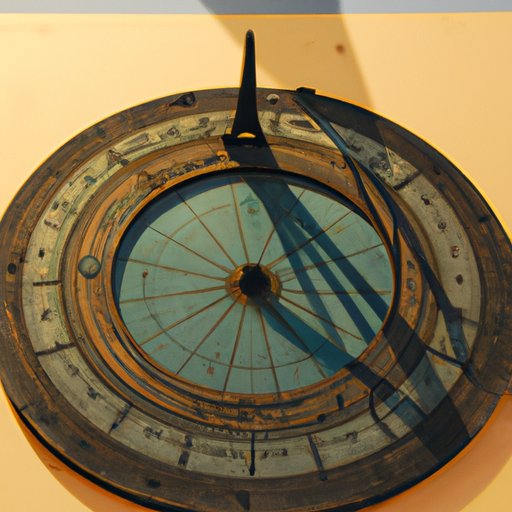Introduction
Time has been around since the beginning of human civilization, but when was time invented? To answer this question, it’s important to understand the concept of time itself. Time is a measure of the passing of events, whether it’s the rotation of the Earth or the seconds in a day. It’s a fundamental part of our lives, and it affects everything we do.
This article will explore the history of timekeeping, from ancient civilizations to modern-day digital clocks and watches. We’ll examine how time was invented and the development of the various time measurement devices used over the centuries. Finally, we’ll look at the evolution of timekeeping technology and the implications for future timekeeping.
Exploring the History of Timekeeping: How Was Time Invented?
The need for a reliable way to measure time has been around for thousands of years. Ancient civilizations used a variety of methods to keep track of time, such as observing the movements of celestial bodies and creating calendars. As these methods evolved, so did the tools used to measure time.
Ancient Civilizations and Time Measurement
In ancient times, humans used the position of the Sun and the stars to measure time. This method was used by the Babylonians in the second millennium BCE. They divided the day into 24 equal parts, which created the basis for the modern system of hours and minutes. The Egyptians were also known to use sundials, which allowed them to measure the passage of time during the day.
Development of Sundials and Water Clocks
Sundials and water clocks were developed by the Greeks and Romans. The sundial was the most accurate of the two, as it relied on the Earth’s rotation and the position of the Sun. Water clocks, on the other hand, used a container of water that was gradually emptied over a set period of time. These devices allowed people to accurately measure time during the day and night.

An Analysis of the Development of Time Measurement Devices
As time passed, more and more sophisticated time measurement devices were developed. In Europe, mechanical clocks began to appear in the late Middle Ages. These clocks used gears and springs to measure time, and they became increasingly accurate over time.
Mechanical Clocks in Europe
Mechanical clocks first appeared in Europe in the 14th century. Initially, these clocks were large and cumbersome, but they eventually became smaller and more accurate. By the 16th century, mechanical clocks had become commonplace in homes and businesses. In the 18th century, the pendulum clock was developed, which made timekeeping even more precise.
Digital Clocks and Watches
In the 19th century, digital clocks were developed. These clocks used electrical signals to measure time, and they were more accurate than their mechanical counterparts. In the 20th century, wristwatches began to be mass-produced, allowing people to easily keep track of time wherever they went.

How Ancient Civilizations Kept Track of Time
Before the invention of mechanical clocks, ancient civilizations had to rely on other methods to measure time. Astronomy was an important tool for measuring time, and many civilizations used the positions of the Sun and Moon to create calendars. Shadow clocks were also used in some cultures, which involved tracking the length of shadows cast by the Sun.
Astronomy and Calendars
Many ancient civilizations used astronomy to measure time. The Chinese were particularly adept at this, using observations of the stars to create their calendar. The Mayans also used astronomy to measure time, as did the Babylonians and the Egyptians. These civilizations used the movements of the Sun and Moon to create calendars, which served as a way of keeping track of time.
Shadow Clocks and Other Methods
Shadow clocks were used by some ancient civilizations to measure time. These clocks involved tracking the length of shadows cast by the Sun. The Egyptians used a type of shadow clock called a merkhet, which was a pair of sticks used to measure the angle of the Sun’s rays. Other civilizations used similar methods to measure time, such as the gnomon, which was a vertical pole used to measure the Sun’s altitude.
A Look at the Evolution of Timekeeping Technology
In the centuries since the invention of mechanical clocks, timekeeping technology has continued to evolve. Clockwork machines were developed in the 17th century, which allowed for more accurate timekeeping. In the 20th century, electronic clocks and watches were developed, which used quartz crystals to measure time.
Clockwork Machines
Clockwork machines were developed in the 17th century. These machines used gears and springs to measure time, and they allowed for much more accurate timekeeping than mechanical clocks. By the 19th century, clockwork machines had become commonplace in homes and businesses. They were also used in scientific experiments, allowing for more accurate measurements of time.
Electronic Clocks and Watches
In the 20th century, electronic clocks and watches were developed. These devices used quartz crystals to measure time, and they were much more accurate than mechanical clocks. Digital watches became popular in the 1970s, and they allowed people to easily keep track of time wherever they went. Today, these devices are ubiquitous, and they are used in a variety of applications.
Examining the Invention of Clocks and Watches: When Was Time Invented?
Now that we’ve looked at the history of timekeeping, let’s take a closer look at the invention of clocks and watches. Clocks were invented in Europe in the 14th century, while watches were first developed in the 16th century. Both of these inventions revolutionized the way people kept track of time.
Early Mechanical Clocks
The first mechanical clocks were developed in Europe in the 14th century. These clocks used gears and springs to measure time, and they quickly spread throughout Europe. By the 16th century, mechanical clocks had become commonplace in homes and businesses.
The Development of Watches
Watches were first developed in the 16th century. Initially, these watches were bulky and expensive, but they eventually became smaller and more affordable. By the 19th century, pocket watches were popular, and wristwatches began to be mass-produced in the 20th century.
Conclusion
Time has been an integral part of human civilization for thousands of years. Ancient civilizations used a variety of methods to measure time, such as observing the movements of celestial bodies and using shadow clocks. As time passed, more and more sophisticated time measurement devices were developed, including mechanical clocks and digital watches.
So, when was time invented? The invention of clocks and watches revolutionized the way people kept track of time. Mechanical clocks were invented in Europe in the 14th century, while watches were first developed in the 16th century. Today, these devices are ubiquitous, and they are used in a variety of applications.
This article has explored the history of timekeeping and examined how time was invented. It has looked at the evolution of time measurement devices, from ancient civilizations to modern-day digital clocks and watches. We now have a better understanding of the history of timekeeping, and the implications for future timekeeping.
(Note: Is this article not meeting your expectations? Do you have knowledge or insights to share? Unlock new opportunities and expand your reach by joining our authors team. Click Registration to join us and share your expertise with our readers.)
